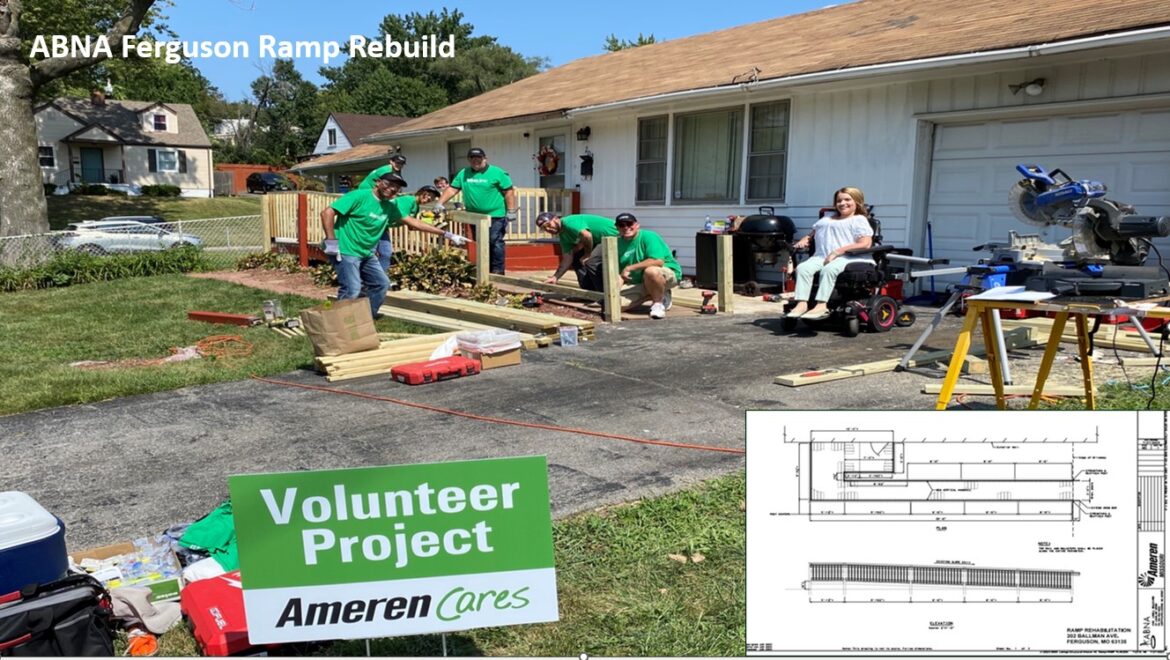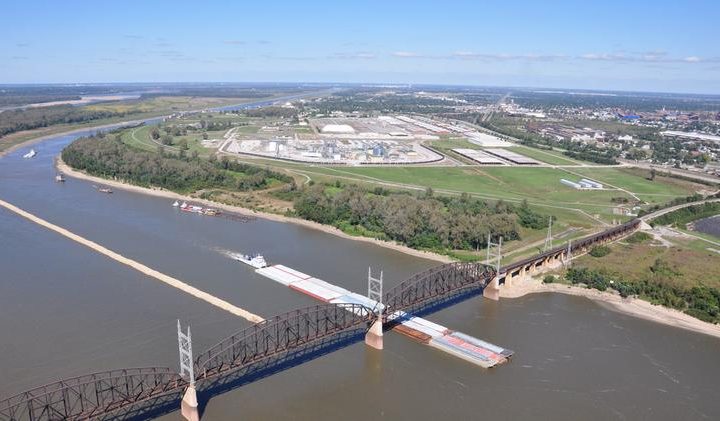
The dynamic and diverse career opportunities available across the freight industry –
including opportunities related to the construction of multimodal infrastructure – were the focus of a virtual panel
discussion during FreightWeekSTL 2025. Panelists included Adam Mahlandt, General Manager, Terminal Railroad
Association of St. Louis; Bill Kinzeler, Senior Vice President & General Manager, Ingram Infrastructure Group; Brad
Reinhardt, President, WEL St. Louis, a third-party logistics firm; and Nicole Adewale EdD, Principal/Owner, ABNA
Engineering, Inc. Hosted by the St. Louis Regional Freightway, the panel session highlighted pathways students can pursue
to secure jobs in the rail, barge and trucking sectors and emphasized the critical role training programs play in preparing
the future workforce.
Reinhardt, who also serves as board chair for the Transportation Club of St. Louis, discussed the extensive opportunities
within the logistics and trucking sectors. “Logistics and transportation are more than just driving a truck or being a part of
a third-party logistics company,” Reinhardt said. “There are also data entry jobs, sales jobs and warehouse jobs, IT is a big
part of it, accounting, manufacturing, as well as the whole new AI industry that has now become a big player in our
industry. Coming straight out of high school or really any past job, it’s very easy to get into the logistics world. Whether
you’re driving for Amazon, FedEx or a manufacturing company, those jobs can start around $50,000 and eventually build
up to a six-figure range. It’s a very lucrative and huge industry to get into.”
Mahlandt shared his insights on career opportunities within the rail sector, including labor union positions such as
conductor switchmen who control and coordinate train movements while switching railcars, track laborers who perform
manual tasks related to track infrastructure, and mechanical carmen who inspect and maintain rail car fleets. He also
emphasized the benefits union positions offer, including insurance for health, dental and vision, railroad retirement plans
and highly competitive wages, with pay on average ranging from $75,000 to $100,000 a year starting right out the gate.
“We have roughly 10 to 15 new hires per year for all the different crafts,” Mahlandt said. “And with that, there are also
opportunities for advancement. I started with TRRA as a switchman many years ago, so there are possibilities for
management and other union promotions – just a lot of opportunities right here in the Metro East area.”
Kinzeler highlighted the wide range of career paths available within the marine and infrastructure sectors. These include
deckhands, pilots and maintenance engineers, in addition to welders and fitters that work to repair the company’s boats
and barges. He said apprenticeship and internship programs are available for associates coming right out of high school
who are interested in pursuing jobs such as this with Ingram. Individuals with a college degree can also explore a variety
of other positions offered within the company, including accounting and finance, health safety and environmental
operations, sales, general management and more.
“We like to bring students in, either in high school or college, and start teaching them the skills needed for the job so,
when they graduate, they’ve got something to move into,” said Kinzeler.
“We’ve got a lot of high school graduates that are now making north of $100,000 a year, some in their early-to-mid-20s.
So, a lot of opportunities – a lot of career paths.”
Adewale said ABNA Engineering is also actively working to support high school graduates entering the workforce with an
apprenticeship program that grants them the opportunity to get an associate’s degree while training and earning on the
job. She stressed the importance of civil engineering in supporting other sectors such as waterways, rail and roads. She
also highlighted the various career paths within her company, including civil engineering design, land surveying,
construction management and support professionals.
Adewale said that, while company apprentices and most of their high school graduates start off making $20 to $22 an
hour, a mid-range engineer can make anywhere from $75,000 to $100,000, and management can make anywhere from
$100,000 to north of $250,000 depending on where they are located in the country.
When asked about the types of things high school students should be focused on to land a job in the freight industry or
engineering field, the panelists reinforced the importance of exploring hobbies to determine what best suits them,
aligning those interests with available career path options, researching the types of training required and honing in on
individual skill sets that are critical for the jobs they are seeking. Additionally, they touched on the value of participating in
enrichment and pathway development programs, internships and job shadowing opportunities, and connecting with high
school career counselors for helpful leads.
Adewale recommended young people take advantage of online resources like YouTube, Instagram, TikTok, X (formerly
Twitter) and LinkedIn, and to take the initiative to contribute and grow professional relationships. She said the best way
to network is to volunteer and to start volunteering at a young age.
Kinzeler and Mahlandt each underscored the importance of energy, enthusiasm and attitude in new hires, in addition to
critical thinking ability and a general interest in being outdoors for jobs in the rail and barge sectors.
“When we look at this industry, we kind of look at it as a rule of 30,” said Kinzeler. “Everybody is under 30 years old or
over 30 years’ experience. For anybody interested in this industry – we’ve got a generational gap, and we’re looking for
young folks to come in that want to learn it and want to train. The sky’s the limit in this industry.”
Within the trucking sector, Reinhardt cited that each company has its own specific training, but high school students
looking to get started and to obtain their Class B license will need to become experienced drivers and study to pass the
required exams, so they can drive trucks that are under 20 feet long. Once they turn 21, he said they can get a class A
license to drive a semi-truck. Community college programs, truck driving schools and private companies also offer
opportunities for advanced learning. On the logistics side, Reinhardt said becoming familiar with the language and
learning computer systems is essential, while learning to interact with people and refining interpersonal skills is crucial on
the sales side.
The virtual panel session was moderated by Mary Lamie, the head of the St. Louis Regional Freightway and Executive Vice
President of Multimodal Enterprises for Bi-State Development.
“We’re excited to highlight the tremendous career opportunities in the freight and engineering sectors in the St. Louis
region and the paths students can take to land those careers,” said Lamie. “It’s inspiring to see the tremendous efforts
being made to attract high school and college students to fill in-demand positions in these growing sectors, which are so
integral to our region’s growth.”
FreightWeekSTL 2025 continues through June 6. To learn more, register for the remaining virtual panel sessions, or view
past sessions or view past sessions for FreightWeekSTL, visit https://freightweekstl.com.




